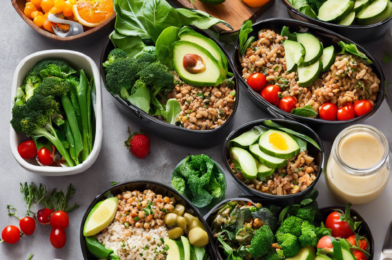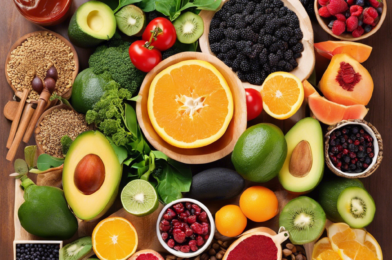The quest for quick and easy weight loss has led to the proliferation of numerous fad diets, each promising miraculous results. However, these diets often rely on misleading information and can sometimes be detrimental to your health. It’s crucial to separate fact from fiction when it comes to weight loss. Here, we debunk some common fad diet myths and reveal what truly works for shedding those extra pounds and maintaining a healthy lifestyle.
One pervasive myth is that drastically cutting calories leads to sustainable weight loss. While reducing caloric intake can result in short-term weight loss, it often leads to muscle loss, nutritional deficiencies, and a slowed metabolism. This approach can also trigger a rebound effect, where individuals regain the lost weight and sometimes even more once they return to normal eating patterns. A more effective strategy is to focus on a balanced diet that provides adequate nutrition while creating a modest calorie deficit through portion control and healthier food choices.
Another common misconception is that eliminating entire food groups, such as carbohydrates or fats, is necessary for weight loss. Low-carb and low-fat diets have been popular for decades, yet both macronutrients play essential roles in our bodies. Carbohydrates are the primary energy source, especially for the brain and muscles, while fats are crucial for hormone production and cell function. Instead of eliminating these food groups, it’s better to focus on consuming whole, unprocessed foods and choosing complex carbohydrates and healthy fats over their refined and unhealthy counterparts.
Detox diets and cleanses claim to rid the body of toxins and promote rapid weight loss, but there’s little scientific evidence to support these claims. The human body is equipped with its own detoxification systems, primarily the liver and kidneys, which efficiently eliminate toxins. Relying on detox diets, which often involve severe calorie restriction and limited nutrients, can lead to dehydration, electrolyte imbalances, and other health issues. For true detoxification and weight management, it’s more effective to eat a balanced diet rich in fruits, vegetables, and whole grains, and stay well-hydrated.
The belief that eating late at night leads to weight gain is another widespread myth. While it’s true that nighttime eating can contribute to weight gain if it results in consuming more calories than needed, the timing of meals is less important than the overall quality and quantity of food consumed throughout the day. Late-night snacks are often unhealthy choices, such as chips or sweets, which can contribute to weight gain. To avoid this, plan balanced meals and snacks during the day to curb late-night hunger and choose healthier options if you do need a nighttime snack.
Fad diets often promote the idea that certain foods or supplements can magically boost metabolism and burn fat. While some foods, like green tea and spicy peppers, can slightly increase metabolic rate, the effect is minimal and not enough to cause significant weight loss on their own. No single food or supplement can replace the benefits of a balanced diet and regular exercise. Building muscle through strength training and maintaining an active lifestyle are far more effective ways to boost metabolism and burn calories.
Skipping meals, particularly breakfast, is a common tactic used in fad diets with the belief that it reduces overall caloric intake. However, skipping meals can lead to increased hunger and overeating later in the day. Breakfast, in particular, is important because it kickstarts your metabolism and provides energy for the day. Studies have shown that people who eat a healthy breakfast tend to have better weight management than those who skip it. Instead of skipping meals, aim for regular, balanced meals that include a mix of protein, healthy fats, and complex carbohydrates.
Juice fasting is another fad diet trend that promises quick weight loss and detoxification. While drinking juice can provide vitamins and minerals, juice fasts lack the protein, fiber, and healthy fats necessary for a balanced diet. This can lead to muscle loss, blood sugar spikes, and feelings of deprivation. For a healthier approach, incorporate fresh juices into a well-rounded diet that includes a variety of whole foods. This way, you can enjoy the benefits of juice without sacrificing essential nutrients.
Lastly, the myth that weight loss can be achieved without exercise is misleading. While diet plays a crucial role in weight management, physical activity is equally important. Exercise not only helps burn calories but also improves cardiovascular health, boosts mood, and builds muscle mass, which can increase metabolic rate. A combination of aerobic exercises, such as walking or swimming, and strength training exercises, like lifting weights, provides the best results. Incorporating regular physical activity into your routine is essential for long-term weight loss and overall health.
In conclusion, sustainable weight loss is best achieved through a balanced diet, regular physical activity, and healthy lifestyle habits rather than relying on fad diets and quick fixes. Understanding and debunking these common myths can help you make informed choices that lead to long-lasting results. Focus on nutrient-dense foods, maintain an active lifestyle, and create a consistent, manageable routine to achieve and maintain a healthy weight.






